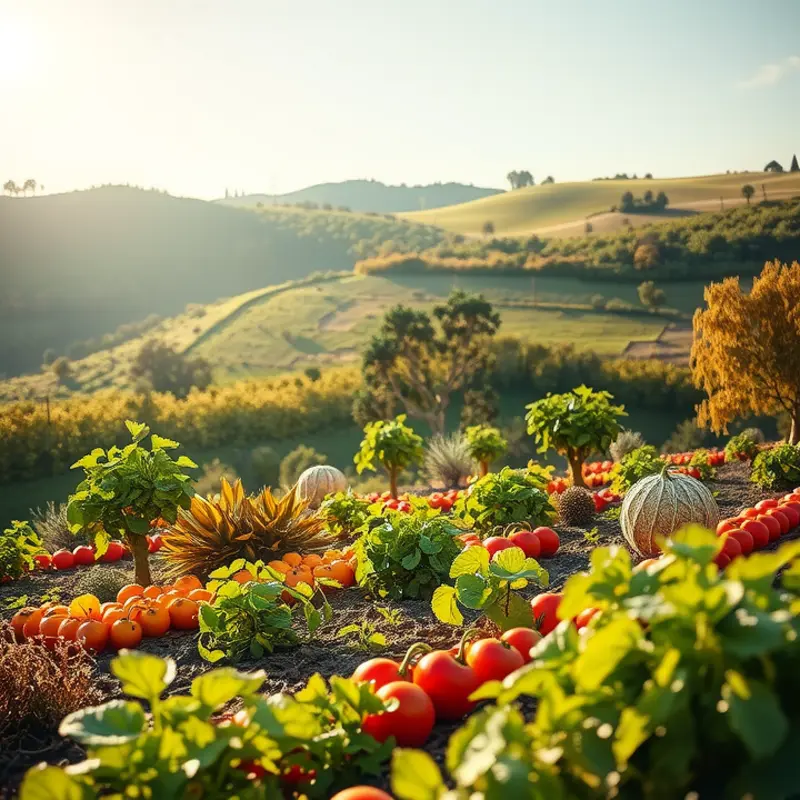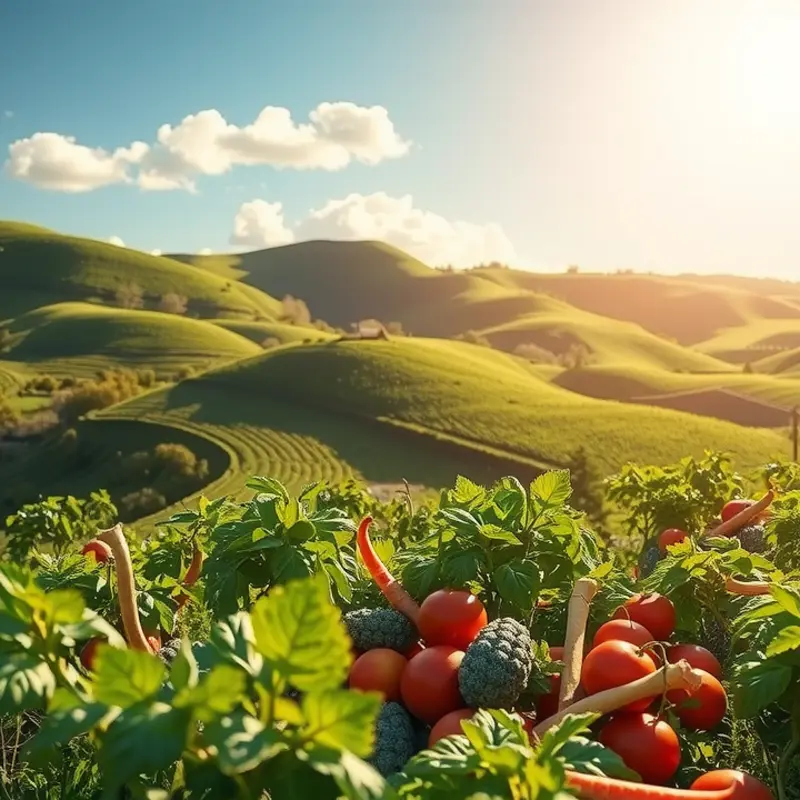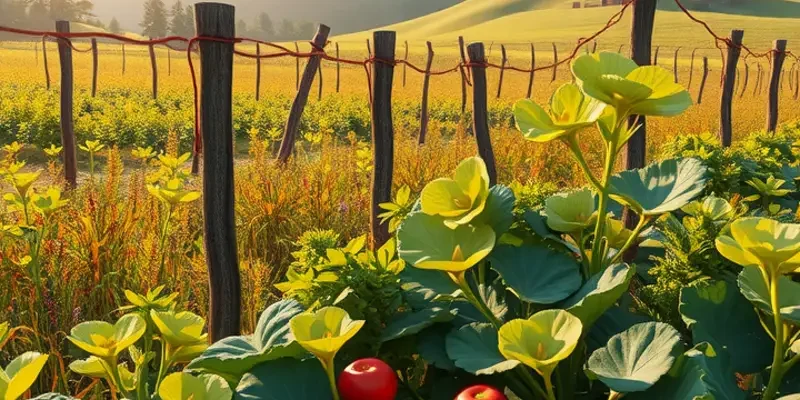Pickling is more than just a method of preservation; it’s a vibrant tapestry woven into the cultural heritage of communities worldwide. From the crisp, tangy cucumbers of Germany to the fiery kimchi of Korea, pickling reflects local tastes, seasonal bounty, and cherished traditions. This exploration celebrates the art of pickling across different cultures, inviting food enthusiasts and the culturally curious alike to appreciate the flavors and stories behind these unique practices.
The Art of Pickling: A Global Perspective

Each region of the world boasts its unique approach to pickling, driven by local ingredients and cultural influences. At the heart of pickling lies a simple formula: preserving food through fermentation or brine. Yet, the variations are as diverse as the lands they come from.
Asian pickling practices, for example, incorporate a harmonious blend of flavors. In Korea, kimchi showcases fermented cabbage spiced with red chili, garlic, and ginger, resulting in a dish both tangy and Umami-rich. Japanese tsukemono, on the other hand, emphasizes subtlety and balance, often using rice bran, salt, or miso as the pickling agents. These methods align with their philosophy of enhancing natural flavors.
In the Indian subcontinent, pickling is a celebration of spices. The intense heat and humidity of the region necessitate preservation methods that withstand these conditions. Indian achar is made with local spices such as cumin, mustard seeds, and turmeric, immersed in mustard oil. This not only conserves the vegetables or fruits but infuses them with robust flavors.
The Middle East and Mediterranean regions offer a different palate, often favoring vinegar-based pickles. Countries like Lebanon and Greece utilize vinegar, garlic, and olive oil, creating aromatic pickles that complement their rich cuisines. Seasonal vegetables, such as cucumbers and carrots, are often used in these preparations. The substantial use of vinegar is not just for preservation but to introduce a refreshing zing that balances rich dishes.
Heading to Europe, we find the tradition of sauerkraut and pickled herring in Germany and Scandinavia. These are staples preserved through fermentation. Sauerkraut, composed of cabbage and salt, ferments over weeks or months, developing a distinct sour flavor. This form of preservation dates back centuries, acting as a remedy against winter scarcity when fresh produce was not accessible.
In contrast, Latin American pickling often embraces spiciness. In Mexico, techniques like escabeche use a combination of vinegar and local chilies to pickle vegetables and sometimes meats. These flavorful concoctions add depth and boldness to their vibrant plates.
Interestingly, the local climate and seasonal availability of produce significantly influence these methods. In some regions, the climate dictates a preference for faster pickling via vinegar, while fermentation becomes prominent in areas where cool temperatures support it over long durations.
Exploring the world of pickling reveals its adaptability and resourcefulness. Across continents, these techniques form an archive of cultural stories and ecological wisdom. For those interested in sustainable kitchen practices, understanding these traditions highlights routes to reduce food waste through preservation. Discoveries like these emphasize the synergy between culture and preservation, enriching our culinary landscape.
For a deeper dive into how different cultures have historically influenced culinary practices, visit this guide on culinary influences.
Cultural Corners: Pickling Traditions Around the World

Pickling practices are deeply embedded in the tapestry of cultural identity, offering a window into the flavors and traditions of regions worldwide. In Italy, the vibrant medley of giardiniera—a mix of pickled vegetables like peppers, carrots, and cauliflower—celebrates the country’s love for fresh produce. This concoction captures the sweet and tangy essence of Italian cuisine, often adorning antipasto platters and family gatherings, reinforcing communal bonds at the table.
Moving east to the heart of Korea, kimchi stands as a symbol of national pride. Traditionally made with napa cabbage, radishes, and a blend of spices, this staple transcends mere food. It is a testament to the Korean spirit of resilience and unity, especially showcased by the annual Gimjang festival. During this event, which UNESCO recognizes as an Intangible Cultural Heritage of Humanity, families and communities gather to prepare large batches of kimchi for the winter months, weaving communal ties through shared labor and tradition.
Delving into the spicy realm of Southeast Asia, pickling takes on robust and fiery characteristics. In countries like Thailand and Vietnam, pickled chilies, garlic, and ginger enliven culinary experiences. These tangy sides accompany a variety of dishes, enhancing flavors while offering bursts of heat. Pickling in this region not only preserves overabundant harvests but also mirrors the fiery spirit and zest for life inherent in Southeast Asian cultures.
Japan presents a subtler, more delicate approach with its tsukemono pickles. Made from cucumber, daikon, and eggplant, these pickles offer a refreshing crunch that complements the nation’s minimalist cuisine. Embedded in Japanese culture, tsukemono accompanies meals in homes and at sushi counters, embodying a balance of flavors and the importance of harmony in every meal.
In contrast, the Middle Eastern tradition of pickling highlights bold and savory profiles, with turshi—a medley of pickled vegetables—often featured in mezze platters. These pickles, flavored with olive oil, garlic, and an array of spices, embody the region’s rich history of spice trade and the culinary fusion that resulted from it. This practice is celebrated in local markets and family kitchens, where pickling serves as both sustenance and art.
As distinct as these traditions are, they share a common thread: the powerful connection between food and identity. Pickling converts ingredients into enduring symbols of heritage, serving as a culinary bridge across time and generations. These practices are intertwined with the essence of community, as seen in shared meals and seasonal festivities, echoing the ways in which food can unite us.
For those interested in delving deeper into how culinary influences shape cultural practices, you may explore this article on culinary influences and trade.
Final words
Honoring the traditions of pickling is an invitation to savor not just the flavors but also the narratives behind these culinary practices. Each jar of pickled produce tells a story of nature’s bounty, cultural heritage, and communal ties. As you explore pickling in your own kitchen, remember that this age-old craft connects us all, bridging geographical divides through the shared love of food. Embrace the art of preservation, and discover the joy that comes from creating and sharing these delicacies, ensuring traditions continue to flourish for generations to come.








